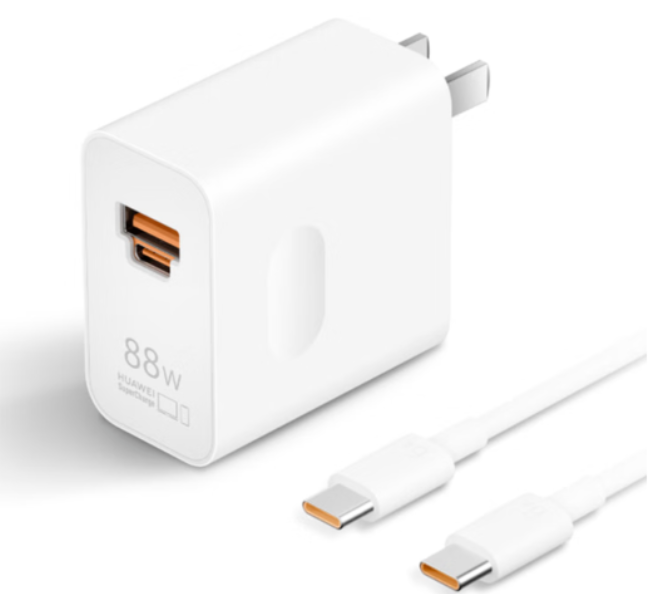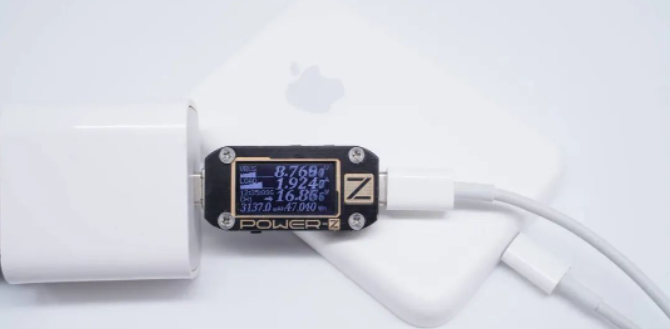Huawei mobile phones pay more attention to stability in fast charging technology. Although Huawei has 100W fast charging technology, it still uses 66W fast charging technology in the high-end mobile phone lineup. But in the latest Huawei P60 series of new phones, Huawei has upgraded the fast charging experience. The Huawei 88W charger provides a maximum output power of 20V/4.4A, supports 11V/6A and 10V/4A outputs, and provides comprehensive backward compatibility with Huawei’s fast charging protocol. And it also provides a variety of protocol support, which can charge other mobile phones.
This charger supports 88W charging speed, supports Huawei Super Charge super fast charging, and has passed the China Fusion Fast Charge UFCS protocol certification. Support USB-A or USB-C cable interface. It should be noted that Huawei’s converged port is an interference design, which only supports single-cable plug-in and output, and does not support dual-port simultaneous use.
Mobile phone fast charging protocol popularization
There are currently several ways to increase power
1. Pull up the current (I)
To increase the power, the easiest way is to increase the current, which can be quickly charged by pulling the current high, so Qualcomm Quick Charge (QC) technology appeared. After detecting the D+D- of the USB, it is allowed to output a maximum of 5V 2A. After the current is increased, the requirements for the charging line are also increased. The charging line needs to be thicker to transmit such a large current, so the next fast charging method has emerged. Huawei’s Super Charge Protocol (SCP) technology is to increase the current, but the minimum voltage can reach 4.5V, and supports two modes of 5V4.5A/4.5V5A (22W), which is faster than VOOC/DASH.
2. Pull up the voltage (V)
In the case of limited current, pulling up the voltage to achieve fast charging has become the second solution, so Qualcomm Quick Charge 2.0 (QC2) debuted at this time, by increasing the power supply to 9V 2A, a maximum charging power of 18W was achieved. However, the voltage of 9V does not meet the USB specification, so D+D- is also used to judge whether the device supports QC2 fast charging. But…high voltage means more consumption. The lithium battery of a mobile phone is generally 4V. In order to charge, there is a charging IC in the mobile phone to control the process of charging and discharging, and to reduce the voltage of 5V to the operating voltage of the lithium battery ( About 4), if the charging voltage is increased to 9V, the energy loss will be more serious, so that the mobile phone will become hot, so a new generation of fast charging technology has appeared at this time.
3. Dynamically boost voltage (V) current (I)
Since unilaterally increasing the voltage and current has disadvantages, let’s increase both! By dynamically adjusting the charging voltage, the mobile phone will not overheat during charging. This is Qualcomm Quick Charge 3.0 (QC3), but this technology is high cost.
There are many fast charging technologies on the market, many of which are incompatible with each other. Fortunately, the USB Association has launched the PD protocol, a unified charging protocol that supports various devices. It is expected that more manufacturers will join the ranks of PD. If you want to buy a fast charger at this stage, it is recommended to use your mobile phone first. If you want to use only one charger to charge all devices in the future, you can buy a charger that supports the USB-PD protocol, which can save a lot of trouble, but the premise is that you It is “possible” for mobile phones to support PD only if they have Type-C.
Post time: Apr-07-2023







